Quote Requests: What Information is Necessary and How to Know if You’re Getting a Fair Rate
Freight quotes. Why are they important and why do they matter if you have LTL or FTL freights? Believe it or not, it happens more frequently than you may think. Knowing customer-specific rates is important for your bottom line. Let’s discover what’s needed to obtain an accurate freight transport quote so you can save yourself from additional expenses during the quote process.
What’s the Difference Between LTL Freight and FTL?
LTL freight, otherwise known as less-than-truckload, is the transportation of relatively small freight. The average weight for LTL freight can be broken down into units of less than 150 pounds.
FTL freight, otherwise known as full-truckload, involves moving bulk or pallet loads that are large enough to justify the use of an entire semi-trailer, typically exceeding 15,000 pounds.
How Freight Costs Are Calculated
Based on the freight provider you work with, they may have different ways of calculating quotes for your transportation needs. It’s important to understand how a freight quote is calculated. First off, what is a freight quote? A freight quote is an estimate of the cost of shipping based on the information you provide, including pickup and delivery location, date, and commodity type.
How to Get the Best Freight Shipping Rate

Here are a few tips on how to get the best shipping rates across the industry:
Consolidate Your Shipping: If you ship to and from the same location regularly, consider consolidating shipments into larger, less frequent shipments.
Select the Best Carrier for the Route: There are different types of freight carriers to choose from. However, take into consideration that individual carriers come with different rates. With that said, determine where you are shipping to and from and that will help narrow down carriers that best fit your needs.
Understand your Freight Classification: It is a standardized method designed by the National Motor Freight Classification (NMFC), which provides customers with a uniform pricing structure when shipping freight.
Minimize Empty Space: Finding ways to reduce the freight class and minimizing oversized fees are 2 ways to save money.
Work with Third-Party Logistics Providers: Working with a 3PL can help oversee some or all of our supply chain and logistics operations, including picking, packing, inventory management, order management, processing, reporting, shipping, distribution, and reverse logistics.
Consider Net Cost vs. Line Haul Rates: When you compare different freight carrier shipping rates and try to find the lowest rate, it’s important to try and look at just the line haul rates and not any additional fees including fuel surcharges and carrier rules fees.
Utilize Carrier Lanes: Carrier lanes impact the rate you will have to pay for your shipment.
We Have the Best Rates for You!
As a family-owned and operated federally licensed, non-asset-based freight brokerage, our team has the ability to provide tailored services for your common and unique cargo. No matter the distance, we support you across every mile.
We are relationship-oriented and quality-driven, making sure you have everything you need to get the job done without affecting quality. Serving as your strategic partner, we act fast to fill the gaps in your supply chain and transportation logistics.
Have a question? Please fill out our shipper request form or reach out to our 24/7 bilingual support team at 833-562-3722 or email info@lone-starlogistics.com to learn more.

